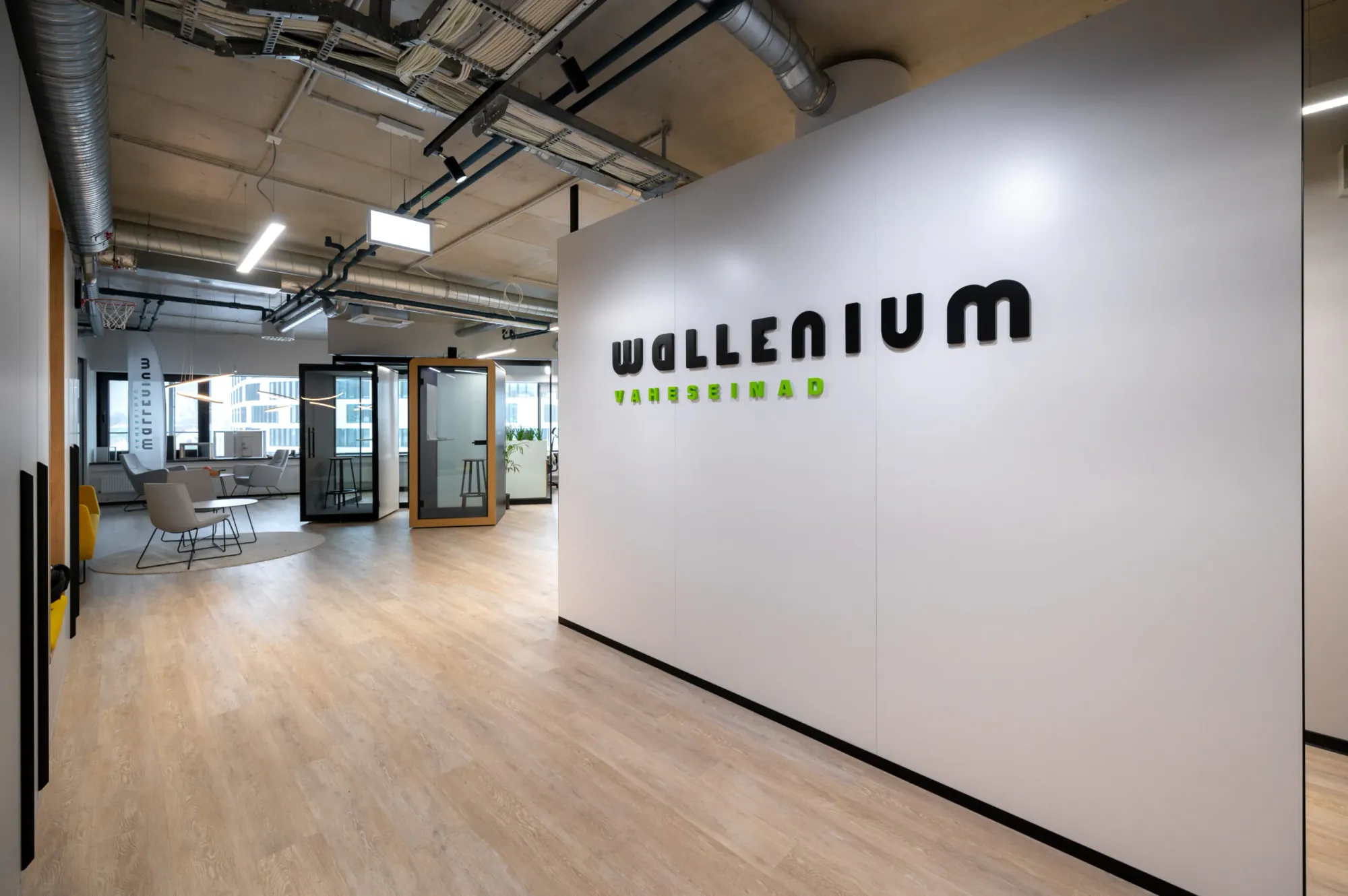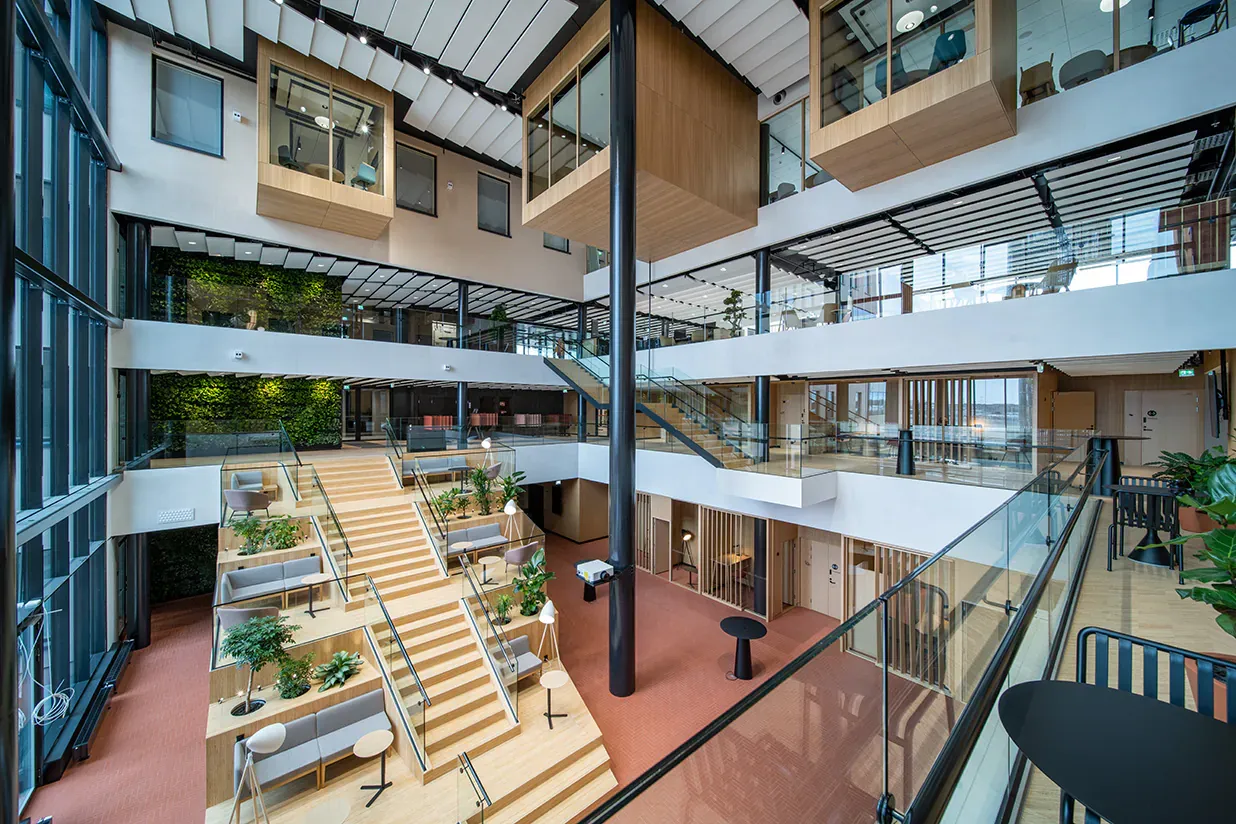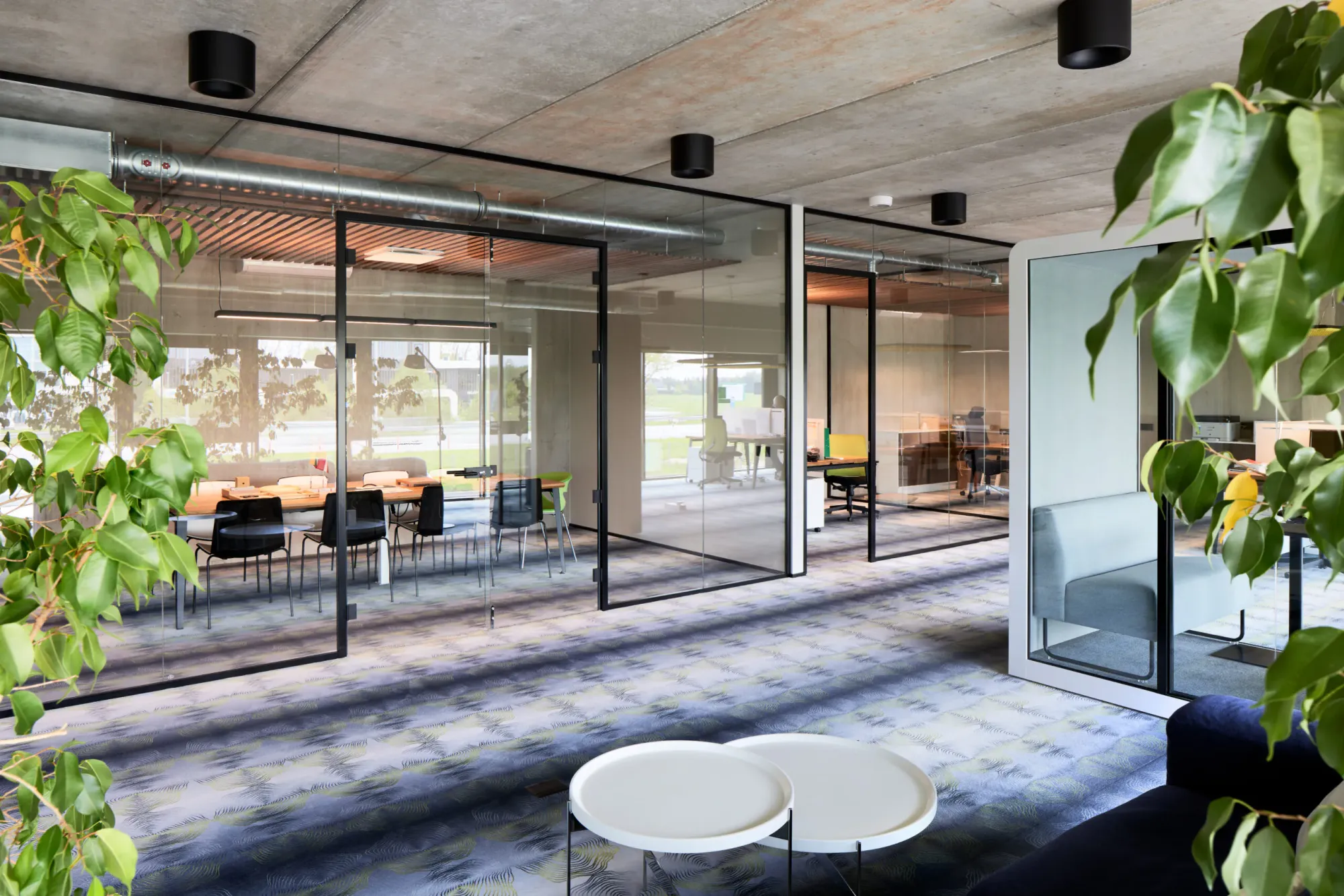Jevgeni Astafjev has a vivid memory of the office where his mother worked when he was a child. Even though the office itself was anything but vivid.
“It was a very sterile, uninspiring environment,” he explains, recalling the grey cubicles and fluorescent lighting that was the norm back in the 90s. “The atmosphere felt detached, and you could tell people were just going through the motions. There was little sense of creativity or personal connection.’’
That feeling stuck with Jevgeni as he entered the world of work himself, determined to create work environments that help foster collaboration, creativity and mental wellbeing.
“Places that are not just functional, but inspiring,” he adds. “Places that encourage people to do their best work and truly enjoy being there.”
Jevgeni is now the CEO of Wallenium, a leading supplier and installer of partition walls and acoustic pods across the Nordic and Baltic region.
After first joining the firm more than a decade ago before rising to CEO, he’s led the company through a period of remarkable growth spurred by the demand for cosier, lighter, and more inviting offices.

It’s a growth trajectory that was briefly stalled by the pandemic, but then accelerated in its aftermath as the fully open office fell out of fashion and companies continue to grapple with the challenge of attracting employees back into the office.
“We sit down with architects and designers in the very earliest stages to help them design their ideal space for that,” explains CEO Jevgeni Astafjev. “And then we’re among the very last contractors on a building site before it’s handed over. It’s us then the cleaners.”
Back at their manufacturing facilities in Estonia, Jevgeni is showing us partition walls that will soon be shipped over to Helsinki to form a startup’s new boardroom, meeting rooms and workspaces.
“We see every product here like a work of art,” says Jevgeni, before launching into a detailed explanation of what makes a high quality partition - ranging from the acoustics to the veneering finishing - and how to play around with the light and space around them for the most positive effect.
Wallenium has been in business for more than a quarter century as the first company to start installing glass walls in Estonian offices, which they honed in their domestic market before expanding internationally.
They still manufacture as much as possible in-house, which is clearly a source of pride for employees, as well as a key to their competitiveness as it enables them to provide highly customised solutions.
“They want to go above and beyond and produce something a little bit different,” says Jevgeni. “It means we can do some really special and difficult projects, including those that other providers don’t even want to attempt.’’

Trending toward sustainability
Wallenium has succeeded by staying ahead of emerging trends, which is why they are also now focused on sustainability.
They are working with LCA Support to account for their carbon footprint, ensuring that all their embodied carbon emissions are transparently calculated and independently verified in Environmental Product Declarations (EPDs) based on international standards.
“An EPD is currently considered ‘nice to have’ as demand grows for lower carbon products, although EPDs will soon be essential,” says Jevgeni.
The EU’s Construction Product Regulation sets out specific requirements for construction product manufacturers to provide transparent and verified environmental data. EPDs help to fulfill that criteria.
While there are not yet regulations for building carbon footprint reporting in Wallenium’s home market of Estonia, companies still have to consider all the evolving rules and trends across their export markets, some of which may be larger than their home market. Several EU countries already have set limits for any new construction’s whole life carbon, including Finland, which is Wallenium’s largest market.
Finland now requires a mandatory building carbon footprint calculation and so contractors are increasingly being chosen based on their fit within the set embodied carbon limits, alongside other factors.

When no EPD is available for a particular product, ‘average’ data must be used instead. This average data is developed using conservative assumptions and safety margins to avoid underestimating environmental impacts, regardless of where the product was sourced from. It is, therefore, always advantageous to use manufacturer specific data when an EPD is available.
“The better carbon footprint numbers you can achieve and prove, the better for business and the environment,” says Jevgeni.
He points to similar experiences they’ve had with changing demands and regulations, such as over acoustic and sound reduction requirements, which inevitably spread across markets so it makes sense to prepare early.
‘’EPDs are here to stay and we will reach a time when the data in them can be the deciding factor for which supplier is chosen. Fortunately, we are getting into a really good shape for them,” says Jevgeni. “The better those carbon footprint numbers, the more opportunities we get.”
EPDs also enable them to identify further improvements in future, such as their switch to 100% green energy.
Jevgeni hopes more companies act faster to reduce their carbon footprint so that the entire supply chain operates to the same high standard.
“The construction sector is interconnected and so no company can do sustainability by itself,” says Jevgeni. “We need to all think together about how to reduce carbon emissions.”


